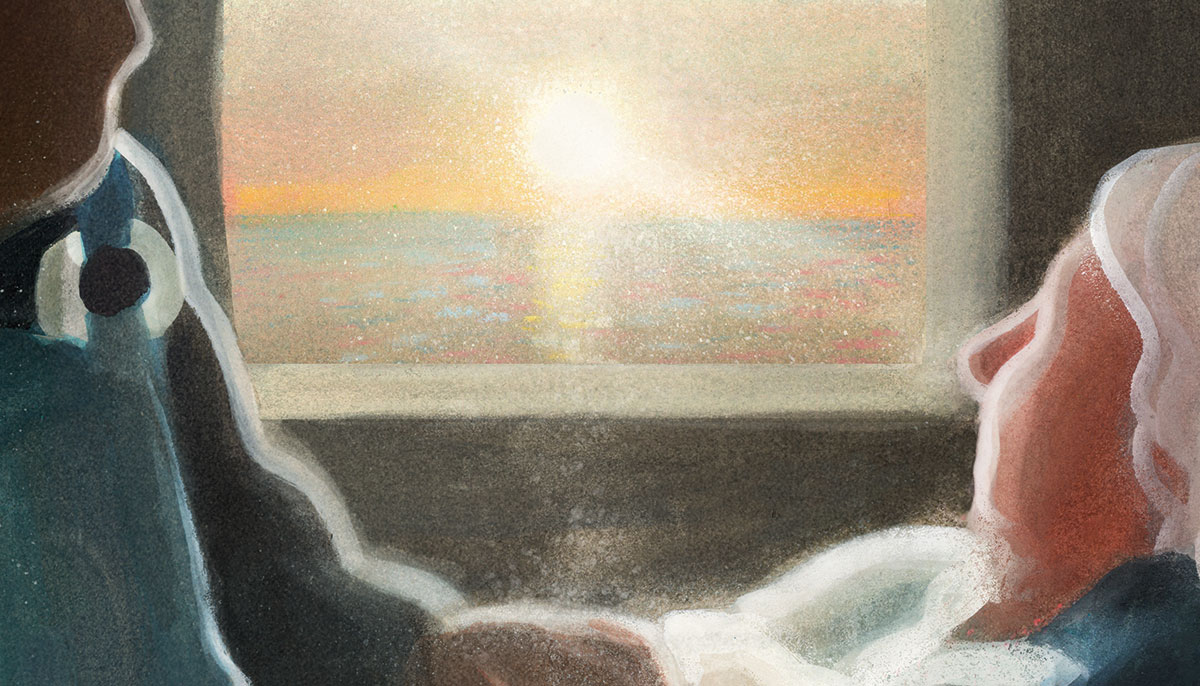Introduction
By Pamela Ayo Yetunde
During my last year of law school in 1992, my cousin announced he was dying of AIDS and asked that relatives visit him. I did so, though I hadn’t seen or talked to him since we were children. Months later, he died in the care of a hospice community. I’d never before heard of hospice, but when I learned what the movement was about—providing comfort to those who are dying, relatives or not—I noticed a strong desire deep within me to become someone who would be able to accompany anyone living out their last days.
It’s often believed that one has to be a special kind of person to be a chaplain, but that’s a myth. Spiritual care is one of the most ordinary things we can offer.
A decade later, I found myself applying to Zen Hospice Project (now Zen Caregiving Project), knowing little to nothing about Zen or Buddhism. Why did they accept me into their program of practitioners? I guess I knew something about loss and sudden trauma from my own father’s death, as well as the suffering caused when some of your relatives abandon you in your final days, as happened to my cousin. I knew I wanted to face death and dying in healthier ways.
Zen Hospice Project was the only hospice organization in the Bay Area in the early 2000s that offered a well-rounded, yearlong volunteer-training program. They changed my worldview and my self view.
I believe I was part of a watershed moment in professional Buddhist chaplaincy. In 2010 there was a formal appeal to the Association of Professional Chaplains (APC), asking them to take Buddhist spiritual formation seriously. As a result, Buddhist chaplains can now qualify for board certification.
Buddhist chaplaincy programs—introductory, nondegree, and degree conferring—are no longer uncommon. One can study Buddhist chaplaincy at the Institute of Buddhist Studies, Union Theological Seminary, Naropa University, Maitripa College, New York Zen Center for Contemplative Care, Harvard Divinity School, Sati Center for Buddhist Studies, Upaya Zen Center, and University of the West. There’s a Buddhist Ministry Working Group comprising people who teach at these and other educational institutions, and Buddhist chaplains are working in hospitals, hospices, and prisons across the country. Buddhist chaplains also use what they know about spiritual caregiving in nonclinical settings.
I find it very encouraging that in a world of aging, illness, and death, the opportunities for giving care are as numerous as delusions and dharma gates. I’m reminded of Case 94 from the Chinese Buddhist classic Book of Equanimity:
Tozan was ill. A monk asked, “Osho, you’re sick. Is there someone not sick?” Tozan answered, “Yes, there is.” The monk asked, “Does the one who is not sick look after you?” Tozan replied, “This old monk is able to look after others!” The monk asked, “Osho, how about when you look after others?” Tozan said, “Then the one having sickness is not seen.”
What does this koan mean? To me, it means we don’t have to be perfect to offer spiritual care to others. It’s often believed that one has to be a special kind of person to be a chaplain, but that’s a myth. Spiritual care is one of the most ordinary things we can offer.
In the pages that follow, six Buddhist chaplains share their experiences of training and working in a variety of settings. In seeing suffering, illness, ability, disability, incarceration, and health through these chaplains’ eyes, we might be able to see in ourselves the old, ill monk who is still able to look after others with wellness and vigor.
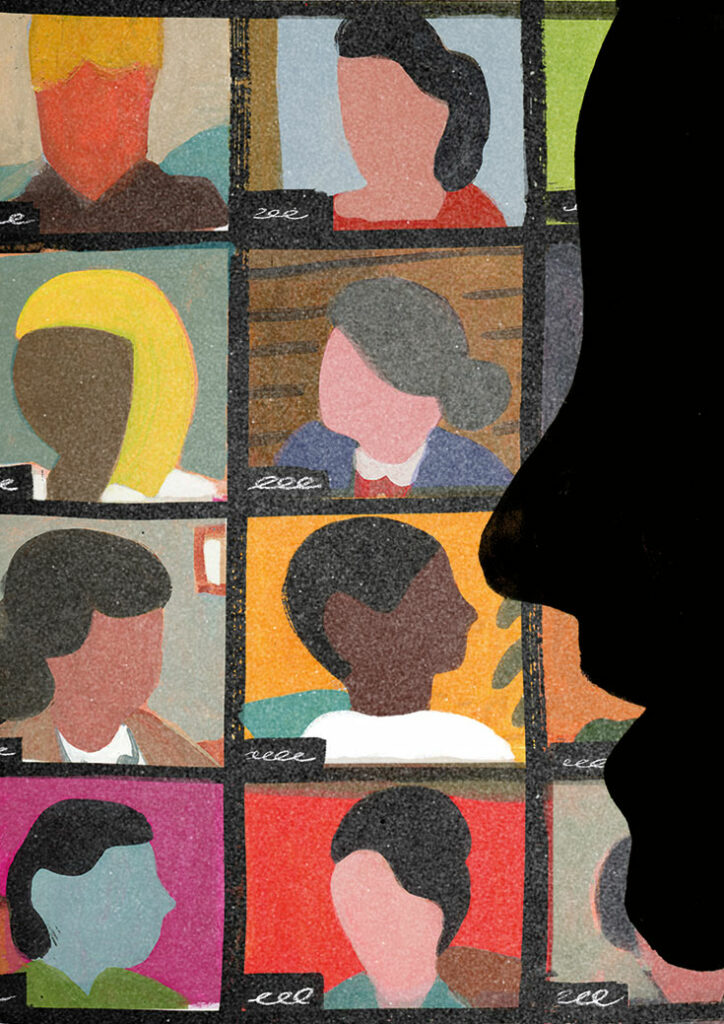
Office Chaplaincy
By Breeshia Wade
I’m a chaplain who works in tech.
When I tell people within the tech industry about the work I used to do in hospices and hospitals, they frequently say, “That must’ve been so hard. I don’t know how you did it!”
In almost every case, they assume that because I’m no longer employed by an institution that explicitly serves people in immediate distress, I’ve abdicated my role as a chaplain in exchange for that of content designer, as if the two are mutually exclusive. They don’t understand that my job is the specific tasks I do within my career, but my function as a chaplain is how I choose to move through the world. While my environment has shifted how I practice chaplaincy, it hasn’t changed what I do in this practice.
Chaplaincy isn’t something we do. It’s a way of being.
The last four years have left the world plundered and in paradox as people both expanded and restricted the breadth of their lives. This has led to an increase in suffering, leaving no one unscathed. Perhaps we personally lost a job, health, or a loved one. Perhaps we know someone who lost all those things, and more. Perhaps we experienced a loss of trust in family, community, nation, or spirit.
People primarily recognize spiritual distress when it’s acute and imminent, for example, amidst illness and death. But we are continually encountering suffering, both in the world and within ourselves. This includes distress on the job.
Tech companies have undergone mass layoffs leaving employees feeling tense and insecure. And many companies, tech in particular, have transitioned from in-person to virtual work cultures, resulting in the loss of workplace relationships.
Virtual work often limits the number of people with whom we come into physical contact each day. At the same time, the constant access to everything everywhere all at once has overextended our attention so much that the endless chat pings, emails, and newsfeed scroll have been drained of differentiation and meaning. The screens that replaced company walls reduced relationships from 3D to 2D, and that dimensional loss has left people feeling disconnected. People are searching on a fifteen-inch screen for a reflection of themselves that is only visible when the screen is off.
Suffering isn’t bound by the walls of hospitals or prisons; it’s pervasive, attaching itself to everybody, at any time. So, chaplaincy is needed well beyond the walls of hospitals and prisons, churches and temples.
Titles, ordination, and job tasks do not define a chaplain; chaplains are defined by their intentional awareness of spiritual suffering in every context, allowing us to truly serve all beings. Chaplaincy isn’t something we do. It’s a way of being.
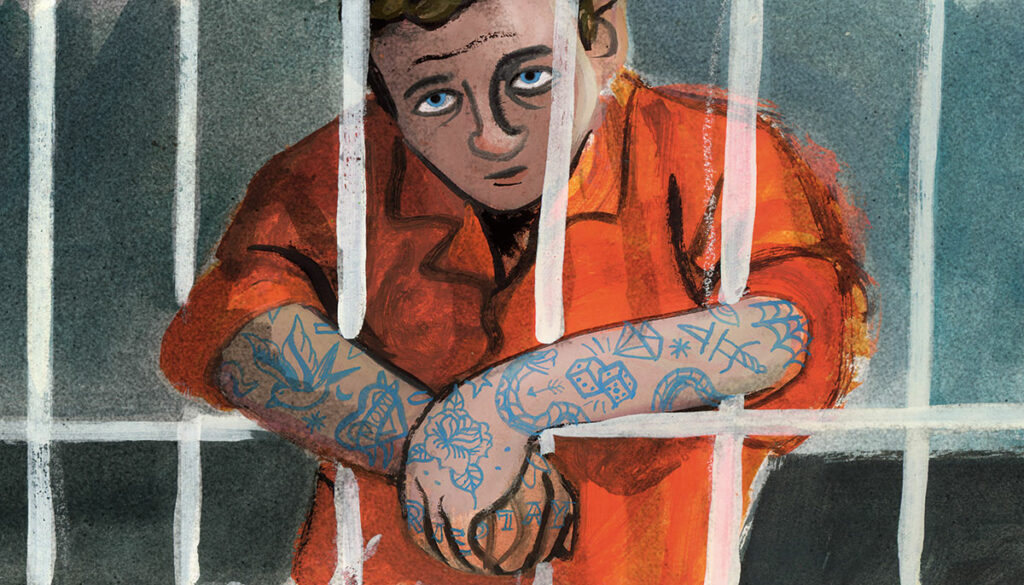
The Sensei Inside
By Yakusan Shapiro
Any ideas I had of doing something as a chaplain have been completely turned inside out through my work with incarcerated people. Currently, I steward the New York Zen Center’s Inside-Outside Study Group, fostering connection through prison walls via supportive letter-writing exchanges.
I came in wanting to change the entire prison system that causes such incredible suffering. While I still want this change, chaplaincy doesn’t work as I thought. What ends up counting most is the presence and acknowledgement I can offer. There are times when I walk down a prison’s endless hallways on the right side of the yellow line. A stream of prisoners walks in the opposite direction on the other side. Paces are brisk and purposeful. My only opportunity to connect is to say good morning. The surprise is hearing the good mornings in reply.
The facility I visit is male and about seventy percent Black and brown. Management seems to be majority white. As a white, Jewish woman, I’m in the minority in terms of race, ethnicity, and gender, but also in terms of power. I come and go to prison on an unpaid internship that I can afford, and staff and administration believe what I say. What goes on inside is what goes on outside.
Buddhist chaplaincy can be a creative force, cultivating spaciousness and an inner life in the present moment.
As I walk through the prison, I’m constantly seeing the systemic harms in the United States play out in individual lives. In the incarcerated population, about one in three people lives with mental illness, many hiding it so as not to be segregated. Physical violence and addiction are rampant. A “good” prison job pays thirty dollars a month. The aging population inside is growing, yet health care is decrepit. Folks are dying in prison utterly alone. Violence against gay and trans prisoners is condoned, forcing people to choose to carry out their time in separated units under conditions similar to solitary.
I witness disturbing and heartbreaking realities in prison. And I witness people defiant in the face of these realities—their defiance coming partly from spiritual strength. I see bloody T-shirts, dementia, camaraderie. I see study and willingness and glass cages. I see separation from families and no families. I see the decision not to use the shank in one’s pocket and the capacity to imagine an ocean bath in Barbados.
I assumed I would know more about Buddhism than the people inside. This was debunked immediately. I have communicated with incarcerated senseis, monks, and Buddhist scholars. Once I was walking down the walkway at a correctional facility with an incarcerated Buddhist, and we were talking about the mu koan. He commented, “You would be moving it along,” and I said, “Mu-ving it along, get it?” And we had a laugh. So, it is possible to laugh.
When I walk through the prison facility, I often feel joy. I sometimes wonder if it’s an inappropriate response, considering the unending punishment experienced by hundreds of thousands of people in prison. What is this joy? A sangha sister recently wondered if joy comes up because it is what’s so needed. Joy as love.
From what I experience, Buddhist chaplaincy can be a creative force, cultivating spaciousness and an inner life in the present moment. Does the care and impact of interpersonal chaplaincy push up against institutionalized wrongs? Is being with people’s suffering a form of abolition? Is it enough? I don’t know.
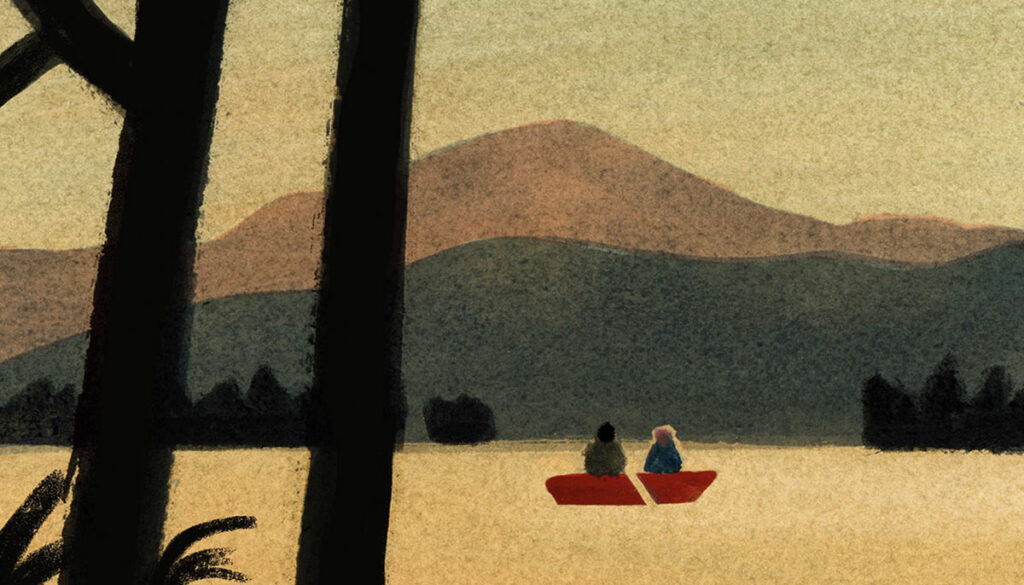
To the Other Shore
By Chenxing Han
For the first two decades of my life, you could have told me a chaplain was a type of boat, a cozy shirt, or someone’s favorite meal, and I would have believed you.
In retrospect, this seems perfectly sensible. English is my father’s third language (mine as well, technically), and it’s my mother’s fourth. How do you say “chaplain” in Shanghainese or Cantonese or Mandarin? Was chapelain in my mom’s French-Chinese dictionary? As immigrants with no other family in America, we had little exposure to the hospital, military, prison, or hospice settings where people are likely to receive spiritual care from a clergy member or lay religious.
I certainly did not expect to apprentice with Buddhist chaplains in Cambodia. But there I was, the summer after college graduation, shadowing the staff of Brahmavihara, a nonprofit serving indigent AIDS patients in Phnom Penh hospitals and prisons. This NGO, which ran from 2000 to 2016, was founded by the American Zen priest Rev. Beth Kanji Goldring. She and a multigenerational group of Cambodian lay Buddhists, many of whom were themselves HIV-positive, were my first teachers of chaplaincy.
We cultivate the brahmaviharas without bounds; they embrace us without distinction.
They were bodhisattvas on motorbikes, branching off in different directions from the Daem Thkov roundabout to offer reiki, chanting, food, medicine, and companionship to the dying, as well as funeral rites for the deceased. They were embodiments of their organization’s name: the brahmaviharas (divine abodes) of metta (loving-kindness), karuna (compassion), mudita (empathetic joy), and upekkha (equanimity).
More than seven years have passed since I last served as a spiritual caregiver in an official capacity. At that time I was at a hospital in Oakland, serving on an oncology unit and a medical/renal unit. Of that yearlong chaplaincy residency, I often joke (though rather seriously) that I wouldn’t trade it for the world, and I wouldn’t want to do it again.
Two years after completing the residency, I was undone by the too-early death of a dear friend. Those four units of Clinical Pastoral Education (CPE) prepared me to feel at ease on the oncology unit in Portland where my former college roommate died, six months shy of her thirtieth birthday. If CPE had given me only that, it would have been more than enough.
A recent Gallup survey, conducted in March 2022, found that one in four Americans has been served by a chaplain. A patient once declared to me that chaplains, available 24-7 at the call of a pager, were “Bonus like cream in coffee, like—” He paused in search of the right analogy, “like fried chicken!”
So maybe we are someone’s favorite meal. Maybe, too, we’re a shirt that coats: after all, the word “chaplain” derives from cappellanu, the priests who cared for the sacred relic of the fourth-century saint who famously cut his cape in half to warm a beggar in rags, only to have his own cape restored in whole after dreaming of Jesus wearing half a cloak. Maybe we’re even a kind of boat, ferrying each other to safe harbor.
The brahmaviharas are immeasurable. We cultivate them without bounds; they embrace us without distinction. We are fed even as we do the nourishing. We are clothed in a shared fabric of joy and sorrow, fear and dreaming. As we embody these divine dwellings, we are transported to the other shore.
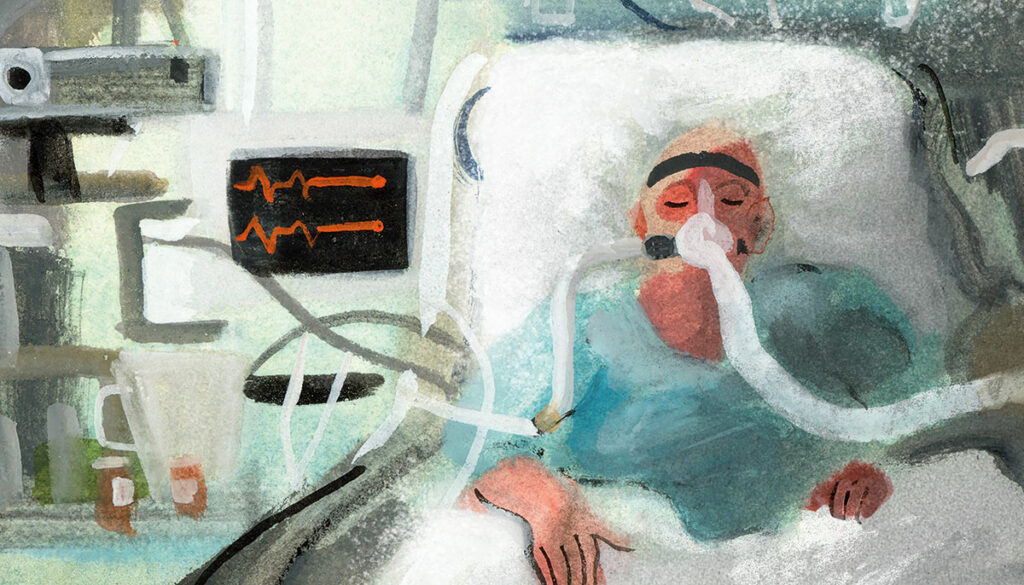
The Stuff of Life
By Clay Gomez
In 2022, I completed a Clinical Pastoral Education (CPE) residency year at a large Level 1 Trauma Center in North Carolina and then went on to serve as a chaplain fellow for seven months in the same location. It’s a spiritual care department that, while predominantly Christian, actively seeks out chaplains from other faith traditions. I felt accepted, and that pleased me.
I spent much of my residency year discerning how to authentically show up for staff, patients, family members, and peers as a Buddhist chaplain for people whose own spiritual tradition(s) differed significantly from my own. For me, it came down to the three tenets of the Zen Peacemakers: not knowing, bearing witness, and compassionate action.
I am privileged each day to have a calling that enables me to plumb compassion’s depths.
Not knowing meant meeting people where they were, regardless of their religious demographic, in a way that was meaningful for them. I met with those who felt incredibly blessed, and others who felt deeply embittered, conflicted, depressed, or joyous. For each, an approach of not knowing enabled me to be present to what was arising for them in that moment, to bear witness to the upwelling panoply of human emotions, and to find a path toward compassionate action.
For a Muslim patient, close to death and no longer visibly responsive, a nurse and a fellow chaplain and I worked together to orient his bed to face east, toward Mecca. For a grandmother whose three-year-old granddaughter was declared brain-dead after being shot in a horrific chain of events, all I could do was catch her as she fell to the floor, wailing in a language known only to the similarly bereft. For a patient in our burn unit who’d just woken from a nightmare of flames, I stayed at her bedside as long as she needed; she just wanted to see someone who was not in scrubs.
And, for countless families who made the difficult, compassionate decision to allow their terminally ill loved one to be moved from curative interventions to palliative, comfort-based measures, I listened to their stories of first dates, fishing trips, sepia-toned weddings, barbecues, and simply strolling to the mailbox—all the stuff of life that too many of us never recognize as the stuff of life until it is taken away.
I am privileged each day to have a calling that enables me to plumb compassion’s depths, constantly being challenged to awaken to the preciousness of this moment, this one right here, and hold as dear the gift of serving others. A chaplain is reminded daily of the truth of impermanence and the omnipresence of dukkha.
Huineng, the sixth ancestor of Chan, was enlightened upon overhearing the Diamond Sutra recited. For Tang dynasty Chan master Xiangyan, ultimate wisdom blossomed when a pebble struck bamboo. So, I am certain that opportunity for enlightenment must surround me on all sides in the charnel grounds of the medical center. It may come in the hum of a flat line, or perhaps in the tears of a couple whose child has just emerged from a coma. I won’t be looking for it if it does, which is as it should be.
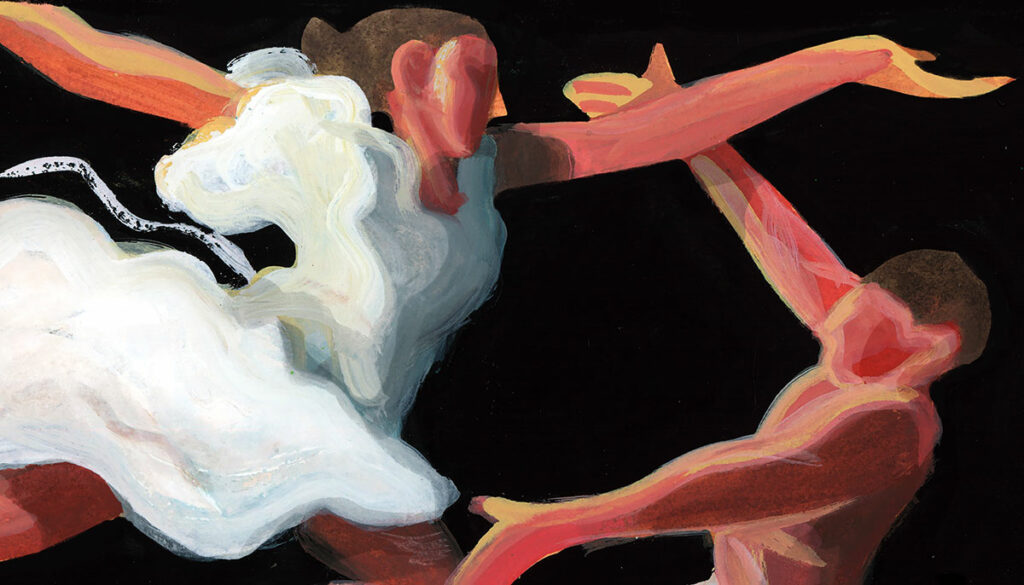
Leap of Faith
By Rev. Keely Rakushin Garfield
People often wonder how chaplaincy and dancing go together. For me it’s a continuum. At one end of the spectrum, dance is characterized by movement and sound, whereas at the other end, when we die, there is stillness and silence.
As a choreographer, conjuring wholehearted dances out of thin air, and a chaplain working in end-of-life and trauma at a busy metropolitan community hospital, I know that presence is primary for both roles. The body itself, with all its variables, is the path.
Navigating my way from the stage to the intensive care unit, I pause and practice the same contemplation at the thresholds: “Am I grounded? Am I present? Am I comfortable?” I feel my feet on the earth, the air moving in and out of my nostrils, and I make peace with being comfortable enough, for the time being.
A back aches. A knee buckles. A body falls apart. I stand on the verge.
Case 46, a koan from Mumon Ekai’s The Gateless Gate, asks, “From the top of a pole one hundred feet high, how do you step forward?” My answer is that I take to the stage. I enter the unit. I drop in. And in doing so, one thing becomes clear: it’s the same leap of faith.
To do the work, chaplains employ a set of skills, or competencies. Among them is compassionate presence, reflective listening, bearing witness to suffering, affirming strengths, and facilitating expression of feelings and meaning making. These same skills are also central to the choreographic process. Dancers cultivate stage presence. They listen to their body’s cues for when to go with the flow and when to move against the grain. Offering a gesture, a nod to fleeting sensation, they find meaning. There’s an agony and an ecstasy embedded in making dance.
Ultimately, choreography is a vehicle for dancing, and dancing is a powerful medium for communication, collaboration, and connection. Chaplaincy also involves communion with the deepest layers of one’s being in partnership with others. The best of chaplaincy and the best of dance both happen beyond the veil of words. A West African proverb springs to mind, “When you pray, move your feet!”
A patient tells me that they are not afraid of dying. A dancer fears getting older. A person is sick, while tending to the one who is sick. A back aches. A knee buckles. A body falls apart. I stand on the verge. Not knowing exactly what will happen next. I feel the music of my breath. Coming and going. Coming and going. I start before I am ready. You appear to me. You look in my eyes and reach for my hand. I join you. We both lean in for a while. You let go and sink back down. I bow my head and walk away. The duet ends here. It means a lot.
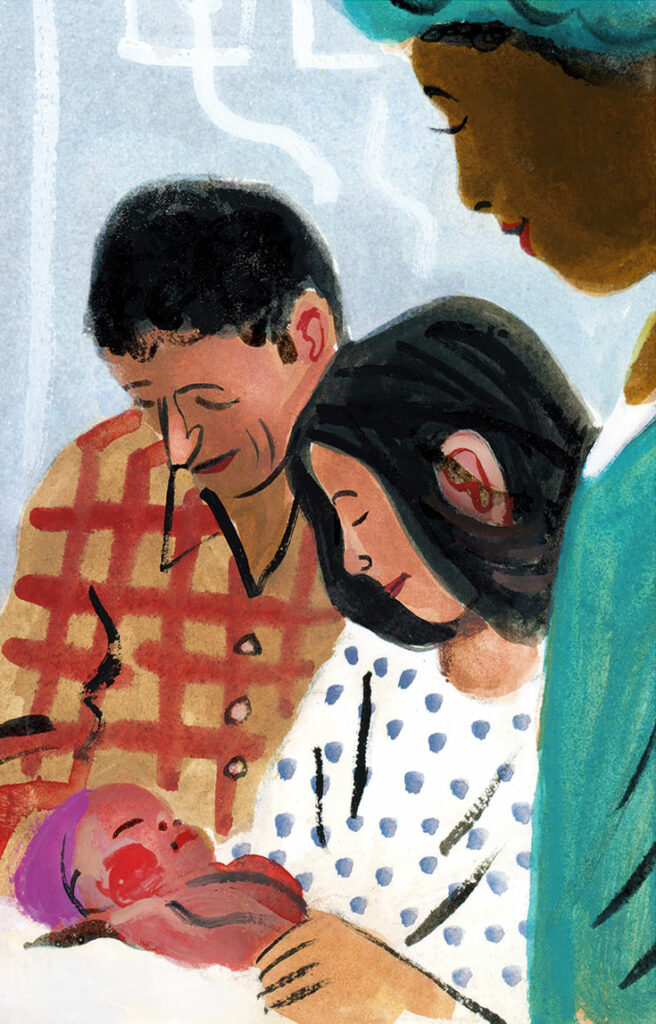
This Is My Church
By Rev. Allison Yusho Draper
This week, I was called to the maternity room of a woman who needed an emergency C-section. I suited up and rushed into the OR where she and her trembling partner requested Christian prayer before the first incision. They also asked me to return after the surgery to bless their newborn son.
Thanking me, they asked, “Where’s your church?” I have answered this question many times before. I said, “This is my church.”
Case 4 from Book of Serenity tells us: “As the World-Honored One was walking with the congregation, he pointed to the ground with his finger and said, ‘This spot is good to build a sanctuary.’ Indra, Emperor of the gods, took a blade of grass, stuck it in the ground, and said, ‘The Sanctuary is built.’”
This is the way I hope to practice my vows; I want to cocreate sacred space, moment by moment.
Performing ritual or ceremony is an essential role of the health care chaplain. Parents might request us to baptize their dying baby, or we might be asked for a ceremonial blessing before a stem cell or solid organ transplant. Near the end of life, we’re often requested to lead the patient and their family in a ritual that expresses their love and affirms their faith in the life to come.
How do I find inherent stillness and beauty amid the beeping commotion of this active ICU?
In their own settings, Buddhist temple monks, Protestant pastors, imams, rabbis, gurus, and Catholic priests are able to conduct orchestrated rituals, handed down through millennia. In a hospital, nursing facility, or home-hospice setting, health care chaplains don’t have the luxury of curated conditions. Yet, formal ceremony is essential at life-and-death moments. It might be all a family has to remind them that they are not alone, and their unimaginable loss has meaning beyond what we ordinarily can see.
The chaplain, as spiritual leader, must let go of their own beliefs and rituals to facilitate a spiritually meaningful moment for those gathered. We learn to improvise. It may look very different from the ritual as performed in church. We may have just moments to baptize a baby lifted from her mother’s uterus, with a surgical nurse or anesthetist as official witness. Through thick fog on our face shield, we may have to read a final anointing rite while holding an iPhone for family to participate by video call. We might have to approximate a sacred space while carefully positioning extended family around life-support equipment.
Zen seminary training prepared me well for the challenge of creating meaningful ritual in a high-acuity maternal and pediatric hospital. I have to be exquisitely attentive, starting with noticing my own suffering. I have to let go and be open. How do I find inherent stillness and beauty amid the beeping commotion of this active ICU? How do I hold this and lift it up as a sanctuary from the transitory chaos and grief?
In ritual, we’re taken beyond our personal suffering and into a collective space. Something supports us. We can’t put it into words, but we can enact it together. It becomes tangible, a felt sense. It’s visible on the faces of everyone in attendance.
